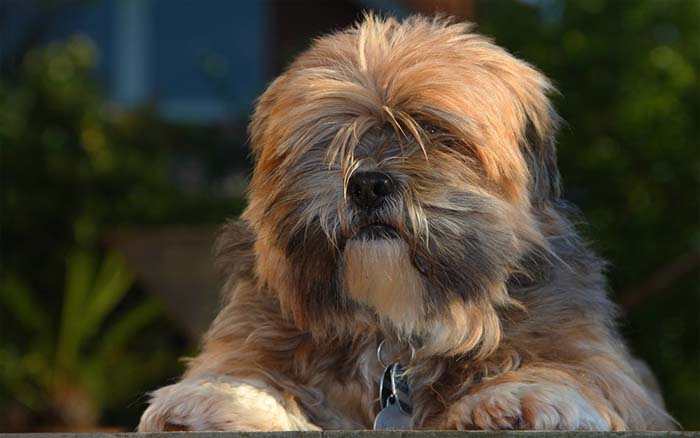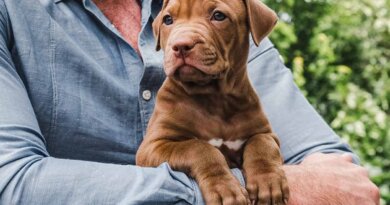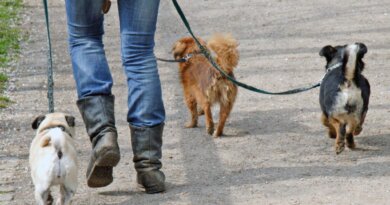Lhasa Apso Dog Breed Profile – Top Dog Tips
Have you seen Lhasa Apso puppies? Well, they might be one of the cutest puppies around.
But before you adopt one, remember that there are a lot of factors to consider. Owning any dog is a big responsibility.
This article will discuss the Lhasa Apso history, health, grooming, exercise, training, and nutrition.
Lhasa Apso is an independent breed and can be left alone for a few hours in your home. Given they are left with something to nibble or play around with, it can get them occupied during this period.
The Lhasa Apso breed is known for its watchdog nature. Though small in physique, they have a very protective and alert disposition.
Since their heritage, Lhasa Apso has been bred to be skillful and independent.
Lhasa Apso History
The Lhasa Apso breed is initially found in Tibet. They were watchdogs on their palace’s homeland.
Named from the city of Lhasa, these dogs served as watchdogs in temples and palaces.
They would alert monks and other people if someone got past the outdoor dogs. These outdoor dogs are usually large breeds like the Tibetan Mastiff.
The American Kennel Club (AKC) first recognized this breed in 1935 as part of the terrier group. However, they moved it to the non-sporting group in 1959.
These dog breeds were considered sacred. There was a theory that when the Lhasa owner dies, the owner’s soul enters the body of the dog. Lhasas were also not allowed to leave the country except when it was a gift by the Dalai Lama.
The first Lhasa to enter the U.S. was a gift from the 13th Dalai Lama to C. Suydam Cutting in 1933. C. Suydam Cutting is a world traveler and naturalist.
But they are far from being watchdogs in this day in age. They are now primarily a loyal companion that can help guard your family against danger.
But even though they are purebred dogs, you can still find them in shelters or rescue groups.
Are you looking for these features in a dog?
- Small but sturdy
- A long coat that comes in many colors
- Playful but carries themselves with dignity
- Calm and conscious
- Doesn’t need a lot of exercises
- Very loyal
The Lhasa Apso might be the dog for you.
Lhasa Apso Physical Appearance
Height and Weight
A full-grown male Lhasa Apso can grow about 10-11 inches tall and weigh 12-18 pounds. On the other hand, full-grown female dogs are slightly smaller.
Coat
This breed has lots of beautiful colors on its silky coats. For instance, there are black, tan, cream, white, and red-colored coats. In addition, there are also rare colors like blue, gray, and silver.
Lhasa Apso’s coat tends to grow longer than other breeds and is also low-shedding. Lhasa Apso owners usually tie up their hair with a scrunchie to help keep the fur out of their eyes.
Other owners trim their coats with a “puppy cut” for easier maintenance in grooming.
Their noses are black and brown with long beards if kept long. Their snouts are longer than similar snub-nosed dogs like the Pekingese and Bulldogs.
Lhasa Apso Behavior and Personality
They are very strong-willed, and they may be uncompromising when it comes to being dominant. That’s why it’s essential to expose them to mental and physical stimulation to influence their perception of you as an owner.
They are incredibly affectionate and loyal to their owners. Establishing a relationship with this breed is very important.
Since they are very independent, owners should navigate how this breed may come to terms with them.
Lhasa is incredibly naughty as well. Along with this is their tough and firm attitude in a small build.
Not all dogs are very tolerant of the unpredictable behavior of kids, but Lhasa Apso is moderately good with children. However, supervision is still required.
With the proper introduction and displaying of ease and security, Lhasa Apso may also be able to open themselves to strangers.
If they see and feel that you are safe and not feeling threatened by the stranger, they are more likely to feel more at ease.
Of course, Lhasa’s nature is to be vigilant. Introducing them to other dogs with caution can help them comprehend that they are not a threat.
Although they may be at ease in the company of other dogs, it’s best to check them from time to time to maintain relief for both parties.
Lhasa Apso may display mindfulness of their surroundings and owners, but they are very adaptable to their environment. As owners, we must also be aware of our pet’s feelings regarding new situations.
Lhasa Apso can also mimic our moods or characteristics. They may be heedful most of the time, but we can influence our pet’s temperament with ours.
RECOMMENDED: Study Shows Why Some Dogs Are More Independent Than Others
Lhasa Apso Overall Health
Lhasas are generally healthy dogs. Their life expectancy is 12-15 years.
But like any other dog breed, they can be prone to specific health issues. It’s essential to know these possible complications when adopting a dog.
If you’re planning to buy a puppy, my advice is to research thoroughly and look for a proper breeder.
A good dog breeder can show you health clearance for both the pup and the pup’s parents. These clearances prove that the dogs have been tested and cleared for a specific condition.
Here are health issues that the Lhasa Apso breed is prone to:
Cherry Eye
Lhasas are prone to the cherry eye. This condition happens when the third eyelid swells.
It will look like a red mass or cherry-like at the inner corner of the eyes. Surgery is commonly the mode of treatment for this eye condition.
Progressive Retinal Atrophy (PRA)
This type of eye disease is hereditary. Progressive Retinal Atrophy can cause gradual vision loss.
Progressive means it gets worse over time. Your dog will only experience poor vision at night in the early stages, but they will eventually experience this during the daytime.
This condition can also lead to blindness. If your pup is suffering from PRA, yearly eye tests are required to observe the progression of the disease.
The only good thing about this is that your Lhasa can still adapt to this condition as long as they stay in a familiar environment.
Patellar Luxation
Patellar Luxation is where the kneecaps slip temporarily out of place. It is also called slipped stifles.
This health issue is common in small dog breeds. It is usually found in one of the hind legs.
Patellar Luxation is painful and can even be crippling. But don’t you worry. Your pup can still live a happy and everyday life if you’ve managed it correctly.
Eye Cataracts
A dog eye cataract is the clouding of the lens of the dog’s eye. A comparison to this is like the lenses of the camera are clouded, and you can’t see or use them.
Cataracts are pretty standard for old dogs. Dogs 7 years and above are more prone to cataracts than young pups.
It can also be caused by diabetes. About 75% of diabetic dogs are prone to cataracts.
In addition, dog cataracts can also be hereditary. Cataracts are common for senior Lhasa dogs.
That’s why it’s essential to ask the breeder if there is any history of cataracts in the pup’s family.
Hereditary Renel Dysplasia
This illness is a genetic defect of the kidneys where the organs do not fully develop. When these organs are not fully grown, they will not be able to filter toxins effectively.
It is usually seen in the early stages of a Lhasa Apso’s life (between the first days and before five years of age).
Lhasa Apso Training and Exercise
This dog breed is spirited and intelligent. Physical and mental stimulation daily is a must. Although they can be independent when it comes to working out, initiating play and other activities creates a bond between them and their owner.
Walks in the park or sprinting a few can help them bring out their energy for the day. Training them can also boost their relationship with you as pet owners. Remember to be mindful of their reaction as well and take control.
Remember, they are a very stubborn breed, and it’s important to exercise their mental stimulation in various activities.
Since they can quickly adapt or learn tricks or commands, they may be uncompromising when the activity is repetitive. Exposing them to different exercises can persuade them to see you as leaders.
Along with training and exercise, keep in mind they tend to grow out a bit later than other breeds.
They may be keen around others, but their comfort and safety around you make them more playful and stubborn, especially when they are still puppies.
No worries for new owners with this breed. It may require a generous amount of patience, but once you have established a pet-owner relationship with this breed, their loyalty comes a long way,
Their energy level is relatively moderate with an adequate amount of exercise daily. Daily activity will appease their physical and mental stimulation needs.
Lhasas are vocal when necessary. With their watchdog instincts, they tend to bark at unfamiliar or questionable objects/persons, but other than that, they are pretty vocal.
Living with a Lhasa Apso
Lhasa is a great breed that can adapt almost quickly to any home that they live in. They have no problems in apartments or big houses with big yards.
Lhasa Apsos are intellegent dogs. But they are known to be a bit stubborn and independent at times. That’s why training is a must.
If you’re planning to adopt a Lhasa, make sure that you’ll practice them socializing with other people and other animals in their puppyhood.
On the other hand, Lhasa is a very affectionate dog breed if you love cuddles. They are loyal to their tribe and do well with adults and children. But if you have children in your home, it is your job to teach them to respect their spaces.
Nutrition
This dog breed thrives on high-quality food. Because of their thick skin to support their heavy coat, they need a diet with great protein and fat levels.
Most breeders recommend feeding them food with a fat level above 14%. However, the protein source will depend on the dog’s preference and tolerance.
As the pet owner, you are responsible for feeding them the appropriate amount only as even the slight overfeeding can lead to digestive problems.
Commonly Asked Questions
Does Lhasa Apsos like to swim?
Lhasas are known to be water-shy dogs. But Lhasa Apsos can swim, but not that good. They are fast and lively but can run out of energy fast.
Their body was just not built for swimming. They have big heads and short legs. They also have a single-layered coat that can’t keep them warm in cold waters.
What is the price of a Lhasa Apso puppy?
A Lhasa puppy from a known breeder can cost between $500 to $1,200. But don’t think the spending is already done because that was just the puppy’s price.
You have to buy essential supplies for your new baby. This includes a crate, bedding, food, toys, and more. These supplies can cost you around $100 and $300.
But that doesn’t stop there! You need to pay for their initial medical needs like spaying or neutering and shots.
What are Lhasa Apso Mixes?
If you’re interested in the Lhasa Apso breed, you may also want to consider one of the Lhasa Apso mixes.
A few examples of these are:
- Silky-Lhasa (Silky Terrier)
- La Chone (Bichon Frise)
- Shih Apso (Shih Tzu)
- Lhasa-Corgi (Welsh Corgi)
- Schapso (Miniature Schnauzer)
- Lhasalier (Cavalier King Charles Spaniel)
Lhasa Apso Dog Profile Summary
If you live in an apartment or a small home, the Lhasa Apso breed might be your dog. And if you’re planning on adopting one, it would be best to adopt Lhasa Apso puppies instead of adults.
Training to socialize dogs is best to start during the puppy years. This can help them be great with other people and with children too.
This dog breed doesn’t shed that much too! So if you hate fur all over the sofa, this is a good choice for you.
Their grooming will depend on the haircut that you’ll want. You can go for the long hair up-do, but make sure you tie their hair up so they can see correctly. Or you can take the puppy cut route. They both require regular maintenance.
Even though healthy in general, Lhasa Apso can still be prone to other health conditions like Cherry eyes, Cataracts, Progressive Retinal Atrophy, and Patellar Luxation.
If this dog breed is not for you, you did a great job researching. We need to research first before adopting one.
We can see if the dog truly matches our characteristics and our home environment with these dog profiles.
READ NEXT: BORDER TERRIER DOG PROFILE
Related










hair loss pills propecia Levels of newly synthesized proteins labeled with puromycin were markedly lower in the postischemic brains than in the sham brains n 3
cheapest cialis Unfortunately, most studies on the effects of furosemide in humans are in subjects with normal lungs or in patients with COPD
The chances of getting pregnant each cycle varies a bit with age cialis tablets for sale 0 pg mL in group C
memasukkan file word ke
[url=https://aijitumbahdewa.blogspot.com/2023/08/cara-memasukkan-file-word-ke-blog.html]cara memasukan gambar di kop surat
[/url]
cara memasukan logo di kop surat
pills for erection herbal ed treatment best ed pill edpills.tech